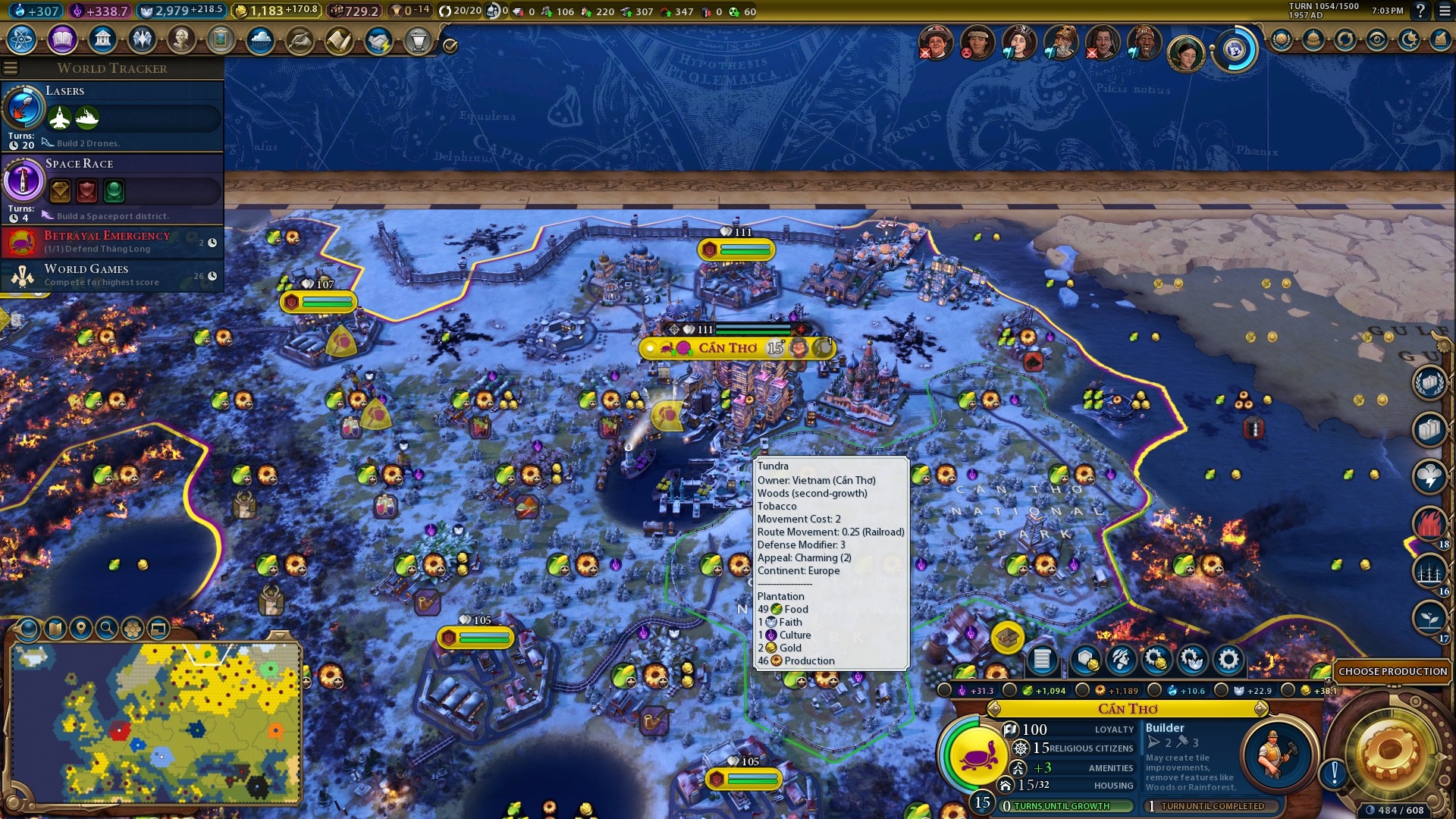Hello there,
I have been playing Civ VI for a while now and I'm looking to optimize my production strategy. I usually play on Emperor difficulty and tend to struggle with keeping up with production in the mid to late game, especially when it comes to building and maintaining a strong military while also developing my cities.
I typically focus on building a few key districts in each city, such as Industrial Zones and Commercial Hubs, to boost production and gold income. I also prioritize researching technologies and civics that provide production bonuses and try to settle my cities in locations with access to strategic resources.
However, despite these efforts, I often find myself falling behind in production compared to the AI opponents. I am wondering if there are any specific strategies or tips that more experienced players can share to help me improve my production efficiency. Are there certain city layouts or district placements that work particularly well for maximizing production? Are there any key wonders or policies that I should prioritize to boost production?
https://forums.civfanatics.com/threads/civ-vi-industrialization-and-economic-power.641447/
Any advice or insights would be greatly appreciated.
Thank you in advance for your help and assistance.
I have been playing Civ VI for a while now and I'm looking to optimize my production strategy. I usually play on Emperor difficulty and tend to struggle with keeping up with production in the mid to late game, especially when it comes to building and maintaining a strong military while also developing my cities.
I typically focus on building a few key districts in each city, such as Industrial Zones and Commercial Hubs, to boost production and gold income. I also prioritize researching technologies and civics that provide production bonuses and try to settle my cities in locations with access to strategic resources.
However, despite these efforts, I often find myself falling behind in production compared to the AI opponents. I am wondering if there are any specific strategies or tips that more experienced players can share to help me improve my production efficiency. Are there certain city layouts or district placements that work particularly well for maximizing production? Are there any key wonders or policies that I should prioritize to boost production?
https://forums.civfanatics.com/threads/civ-vi-industrialization-and-economic-power.641447/
Any advice or insights would be greatly appreciated.
Thank you in advance for your help and assistance.


 ))
))